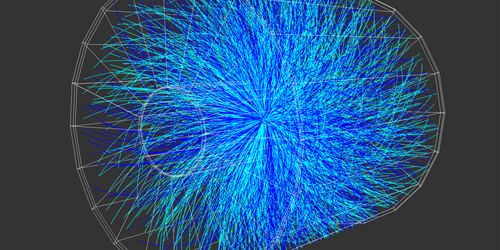How Tightly Bound Are Hypertritons?
The Large Hadron Collider (LHC) is best known for the 2012 discovery of the Higgs boson, which was made by smashing together high-energy protons (see Collection: The History of Observations of the Higgs Boson). But protons are not the only particles accelerated by the collider, and some studies call for colliding much heavier objects. Now a team working on the LHC’s ALICE experiment has collided lead nuclei to study an exotic particle called a hypertriton [1]. The result could help researchers reduce errors in models of the structure of neutron stars.
A hypertriton is a tritium nucleus in which one neutron has been replaced with a lambda hyperon, a heavier particle with a quark configuration of up-down-strange rather than up-down-down. Researchers have long known the energy it takes to bind tritium’s proton and two neutrons. But it was unclear how that energy changed with the neutron–lambda hyperon switch.
The ALICE Collaboration turned to lead–lead collisions to answer this question because these collisions produce hypertritons in much greater numbers than proton–proton ones do. A hypertriton quickly decays into a helium-3 nucleus and a pion, with the decay time and the energy of the decay products depending on the binding energy between the lambda hyperon and the hypertriton core.
The team found that the hypertriton’s lifetime is close to that of a free lambda hyperon, meaning the latter particle is only loosely bound. The formation of lambda hyperons inside neutron stars is thought to affect the stars’ stability, setting an upper limit on their mass. This precise determination of the lambda hyperon’s binding energy could help explain the existence of neutron stars with masses beyond the expected range.
–Marric Stephens
Marric Stephens is a Corresponding Editor for Physics Magazine based in Bristol, UK.
References
- S. Acharya et al. (ALICE Collaboration), “Measurement of the lifetime and Λ separation energy of 3ΛH,” Phys. Rev. Lett. 131, 102302 (2023).




